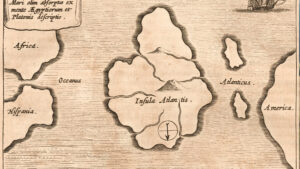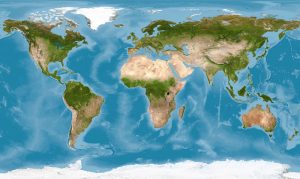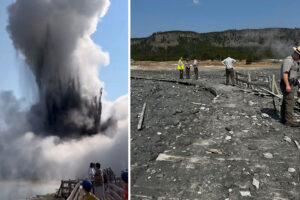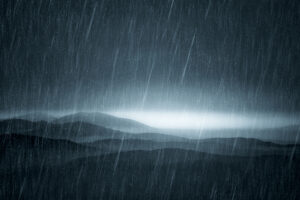Those of us who do expeditions rely on maps for everything from sparking ideas to route planning. Most countries have clear borders, but this is not always the case. In his book The Atlas of Unusual Borders, Zoran Nikolic explores the oddities of the world’s borders and how they came to be.
It turns out that around the globe, there are several border anomalies. These are potential annoyances when planning, but they are also geographical markers of historical events and political conflicts. For hundreds of years, people have fought over pieces of land. Nikolic comments that the borders we now look at are “lines giving the impression of scars left by man on the face of our planet.”
Below, a few of the border idiosyncrasies detailed within the book.
Diomede Islands: Russia-U.S.
Big Diomede and Little Diomede are part of the same archipelago in the Bering Strait. They are just four kilometers apart, and on a clear day you can see the neighboring island across the water. Despite this closeness, they fall on a border that has partly been dictated by politics but also separated by time.

The Diomedes Islands. Map: Google Maps
The International Date Line falls directly between them. Big Diomede belongs to Russia, while Little Diomede is part of the U.S. If you look out from Little Diomede, you can see another country, continent, and day on Big Diomede.
During the Cold War, all the inhabitants of Big Diomede were forced onto mainland Russia so that they did not contact their American neighbors on Little Diomede. These exiles never returned. Instead, there is now a small military base on the island. Meanwhile, just 150 people live on Little Diomede.
The Diomedes in world news
In 1987, American swimmer Lynne Cox brought the two islands to the forefront of world news. To try and ease the tension between the United States and the Soviet Union, she took on a swim to open the border between the countries.

Lynne Cox swims the Bering Strait. Photo: Openwaterpedia
Starting in Little Diomede, she swam the 4.3km across the Bering Strait to Big Diomede. As she plunged into the sea, the icy water took her breath away. “The cold was like a huge vampire pulling the heat from my body,” she said later.
In just a swimsuit and cap, her body temperature plummeted. By the time she got out, her fingers were grey and her hands looked like they belonged to a cadaver.
Organizing the swim was no mean feat. The Cold War was still underway. For years, she tried to get permission to undertake the swim, but her requests to cross the border were ignored. Eventually, she decided to attempt it regardless. With 30 hours to go, two Soviet ships appeared in the Strait. The U.S. responded by sending fighter jets. Twenty-four hours before her swim, she finally received permission from President Gorbachev. In the end, a Russian support vessel accompanied her and she was met by a Russian welcoming party.
In a later meeting with President Reagan, Gorbachev raised a glass to her and commented, “She proved by her courage how close to each other our peoples live.”
Pheasant Island, France/Spain
Pheasant Island is a small, uninhabited piece of land in the middle of the River Bidasoa. It is co-owned by two countries, France and Spain. It is one of the most peculiar border territories out there. Rather than share the island, each country owns it for six months of the year.
For the first half of the year, it belongs to the Spanish city of Irun. Then it switches hands to the French town of Hendaye. Since the agreement came into place 350 years ago, the small island has changed nationality over 700 times.

Pheasant Island falls on the border between Spain and France. Map: BBC
Now shut off to visitors, it was once an important neutral territory and home to a landmark event between Spain and France. In 1659, the island hosted the three-month negotiation that ended in Treaty of the Pyrenees, which ended the Franco-Spanish War.
A year later, a Royal wedding took place on the same spot to mark the occasion: French King Louis XIV married Maria Theresa of Spain.
Mount Athos: Greece
Mount Athos sits on the Athos Peninsula in northeastern Greece. It is an autonomous state under Greek sovereignty. While other countries do not contest ownership, Mount Athos has a unique idiosyncrasy: It is the only territory on Earth with an all-male population.

Simonos Petras Monastery, Mount Athos. Photo: Shutterstock
In mythology, there are two stories about this mysterious mountain. The first starts with Athos, a Thracian giant. During the battle between the gods and the giants, he was going to throw a massive rock at Poseidon when it slipped from his hands and crashed into the sea. Thus, Mount Athos was formed.
The second story tells why the port is called Daphne. Ironically, for what is now an all-male territory, it was named after Daphne, daughter of the Arcadian King. When Apollo fell in love with her, Daphne ran to away to the island to resist temptation and protect her virginity.
Priests and monks began to settle on the peninsula at the end of the 8th century. Now it is home to 2,000 monks who live within its 20 monasteries. Though it has always been considered Greek, it has been contested a number of times. During the Ottoman Empire, it fell to the Turks, but the Greek military later emancipated it.
Ensued a long period of tension with Russia, which questioned the sovereignty of Athos. After the First World War, it was formerly declared part of Greece. Surprisingly, during World War II, though the Germans occupied Greece, Hitler left this tiny section of land alone.

Mount Athos. Map: Google Earth
No females, except chickens and cats
It is possible to visit Mount Athos, but there are two strict rules. You must have a permit and you must be male. It is the only place in the world that bans women from entering. The rule does not just apply to humans. They try to exclude females of any species. The only exceptions are cats and chickens.
This explicit rule makes recent discoveries even more mysterious. In 2019, construction workers uncovered a number of remains underneath a Byzantine Chapel. Anthropologist Laura Wynn-Antikas was brought into study them.
“Bones don’t lie,” she told The Guardian at the time. “They will tell you how a person lived and perhaps how they died.”
A number of the bones were so small they had to be female, she said. The bones were clearly part of a second burial. They had been moved to the site from somewhere else.
The monastery that owns the chapel is equally intrigued by the mystery and has suggested further analysis to uncover the truth. Who is the mystery woman buried on a mountain that has been home to only men since the eighth century?






